If you’ve ever thought about composting and decided that it’s too much trouble, think again. Composting is easier than you might realize. Plus, it’s good for your plants and good for the Earth. It reduces the amount of household waste, particularly in the kitchen. There are a few basic steps to get started with composting.
Select a spot for your pile
First of all, select a spot for your pile; choose a dry, shady area away from your house but close enough for the garden hose to reach. You can build your pile on the ground, or you can use a compost storage bin.
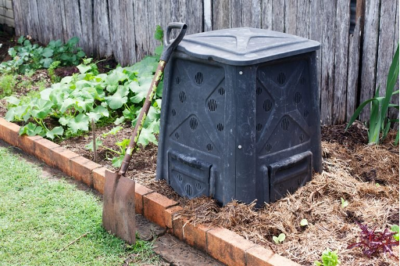
There are many options for outdoor compost bins.
One quick and easy option is to use a plastic trash can with a lid. There are also many compost bins for sale, both plastic and wooden.
The bin should be about 3 feet wide and 2 ½ to 3 feet tall. Be sure to leave room in front of the bin for maneuvering a wheelbarrow to transport the compost.
Build your pile
Next, build your pile. Collect food scraps in the kitchen by placing them in a storage container with a lid. You can buy a container designed for food storage, or you can improvise with a plastic pail or yogurt tub.
Throw in fruit and vegetable peels, apple cores, coffee grounds, eggshells, and more. In addition to food scraps, you will need some dry, brown material, such as grass clippings, dry leaves, or hay.
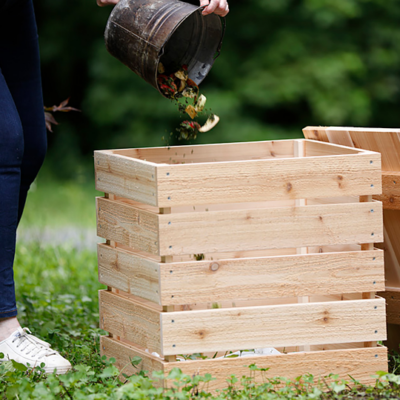
Some people build their wooden compost bins.
Alternate wet and dry materials
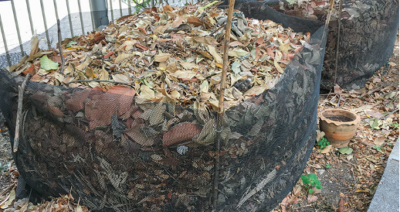
Storing dry leaves near a compost bin can make composting
easy and convenient.
Gather the right tools for composting
A pitchfork or a scoop-shaped shovel is needed for turning the material and transferring it. Metal buckets are also recommended for scooping out compost. A hose with a spray wand makes watering the compost pile easy. And, a wheelbarrow or garden cart is a must.
Learn what to compost and what not to compost
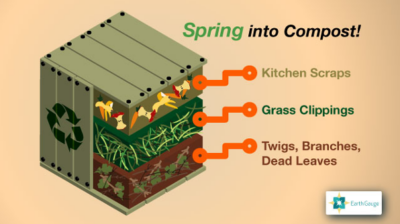
Combining wet and dry materials is essential in composting.
Monitor your compost pile
Turn the materials about once a week; this stirs up things and helps them cook faster. Sprinkle water over the pile to keep it moist, but don’t overwater it. Monitor your compost pile periodically. As materials break down, the pile will get warm, especially the center of the pile. Some gardeners use a compost thermometer to make sure the pile is warm, but you can usually judge by reaching into the pile with your hand.
Feed your garden
Once the compost is dry, brown, and crumbly, it’s ready to use. Feed your garden by adding your compost to pots and flower beds to give your plants a happy home matter which method of composting you choose, take pride in the fact that you are helping not only the plants in your yard but the earth itself.
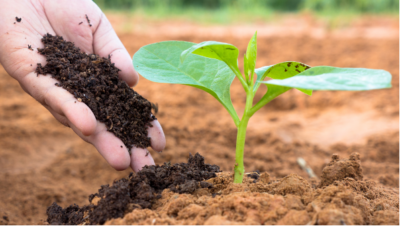
Adding compost directly to the soil helps plants thrive.
Composting in a condo or small yard home?
Composting is a great activity – but what if you live in a condo or have a small yard? You can still support the environment and cut down on food waste in the kitchen! EcoWatch covers the many ways to compost in small spaces in How to Compost in Your Apartment. Learn more about different composters and composting programs in this fun post.
Learn more
In addition to watching your household waste, being aware of your water and energy consumption, and leveraging your use of “green” tech, composting is just one of the many ways you can conserve natural resources at home. For more tips and information on composting, visit these websites:
https://www.bhg.com/gardening/yard/compost/how-to-compost/
https://www.epa.gov/recycle/composting-home
https://www.almanac.com/how-compost-guide-composting-home
—- Bottom Line —-
Looking for a great backyard to start your composting project?
Call us at 205.248.7353 or send us a message. We’ll help you take your first step toward finding “A House That Fitts.”
Don’t forget to SUBSCRIBE to the Carrie Fitts Real Estate YouTube channel today for more exciting news from our dynamic, community-oriented Realtors®!
